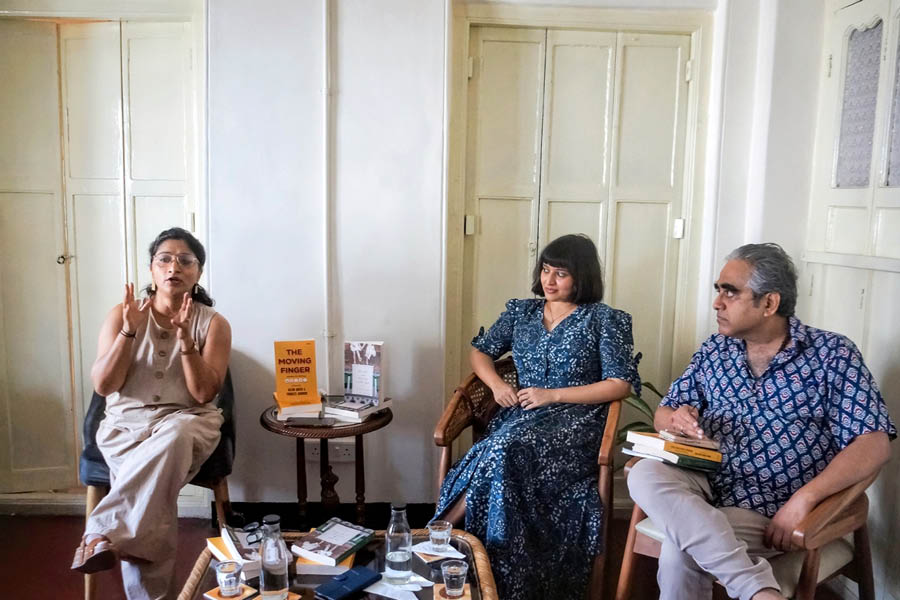Imagine a hot Kolkata evening. Next, picture an elegant hall inside the Indian Museum on the evening of June 16. Now, imagine director Goutam Ghose, musician Bickram Ghosh, actor Moon Moon Sen, and director Aniruddha Roy Chowdhury walking on to a dais along with film scholars, critics, authors and journalists such as Ratnottama Sengupta, Kaushik Bhaumik, Amitava Nag, Deepa Buty and Maitreyee B. Chowdhury to mark the launch of a book about the ’70s in Hindi cinema. Picture also an exhibition on film posters of — you guessed it — Hindi films of the ’70s. Add to this mix the quintessential Kolkata audience, informed and involved to a fault, and you have all the ingredients for a potboiler of an evening, with the arty and the masala juxtaposed to perfection.
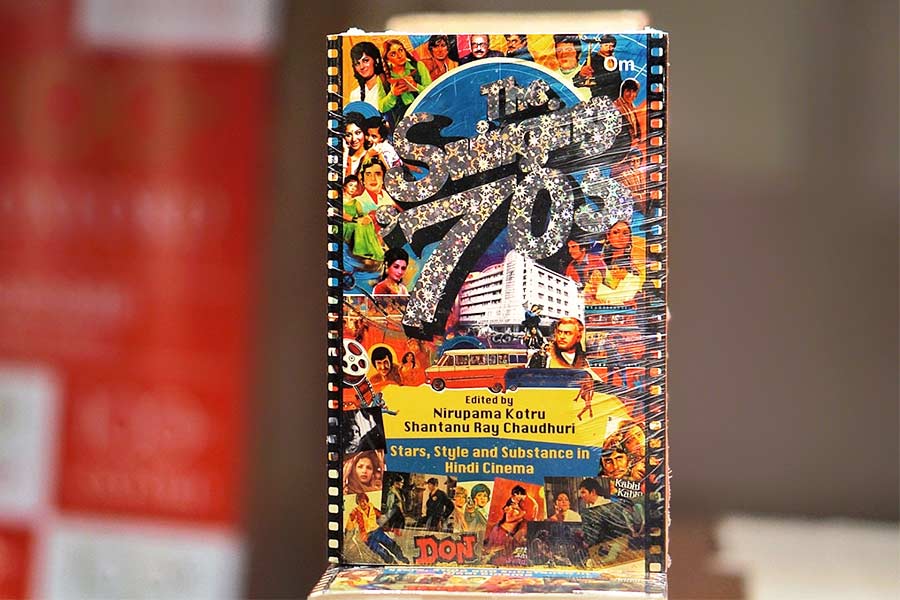
The book comprises 47 essays written by 44 writers
We are talking about the launch of The Swinging ’70s: Stars, Style and Substance in Hindi Cinema (Om Books International), an anthology of 47 essays by 44 writers, edited by film buff and editor-in-chief of Om Books International, Shantanu Ray Chaudhuri, and author and IRS officer, Nirupama Kotru. The event was hosted by Om Books International and the Indian Museum, supported by Coal India Ltd. Ten of the 44 authors were present at the Kolkata launch, having flown in from Delhi, Mumbai and Nagpur.
Amol Palekar as an honorary Bengali
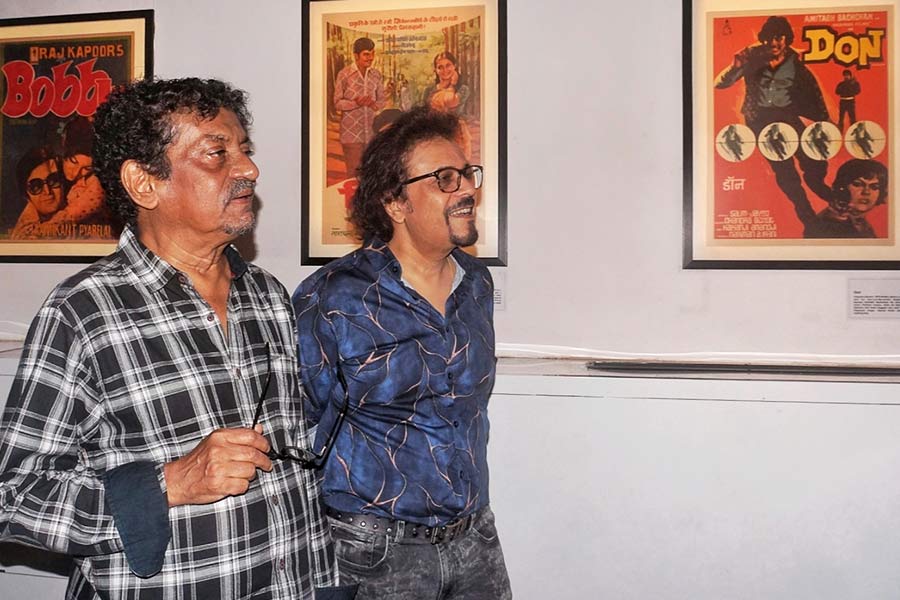
Goutam Ghose (left) and Bickram Ghosh take in some of the film posters on display
Intriguing nuggets of information could be heard from all directions during the walkthrough of the exhibition and were apt trailers of how the panel discussion would unfold. The exhibition, under the aegis of the National Film Archives (NFA) and the National Film Development Corporation (NFDC), was fascinating in its own right, with film posters of the ’70s such as Ankur, Aandhi, Sholay, Chitchor and Kaala Patthar standing testament to the decade’s enduring socio-cultural significance.
After the formal launch of the book by Sayan Bhattacharya, education officer, Indian Museum, P.M. Prasad, CMD, Coal India, Goutam Ghose, Bickram Ghosh, Moon Moon Sen, Aniruddha Roy Chowdhury and actor-author Jayant Kripalani, as well as the editors of the book, the panel discussion got underway.
Moderator Shantanu asked Aniruddha Bhattacharjee, an authority on RD Burman to take on Deepa Buty, a Laxmikant-Pyarelal buff. The takeaway was simple — LP’s music, with its earthy rhythms and focus on melody, spoke to the masses, while RD Burman acted as a bridge between the growing Western sensibilities of the urban youth and our deep-rooted traditions.
Ratnottama Sengupta, author of an essay titled The Girl Next Door and Other Divas, spoke of the significance of the ’70s being the decade that saw the emergence of the ‘ordinary’ girl next door as the leading lady. From a Jaya Bhaduri in Guddi to a Shabana Azmi in Ankur, she spoke of how women in street corners, bus stops and grocery stores were asked if they were the heroine of this film or that. This was the cue for film critic Amitava Nag to talk of the phenomenon that was Amol Palekar, whom he has written about in an essay titled The Extraordinarily Ordinary Common Man. It was amusing to note how many of those on the panel and in the audience shared this reporter’s own memories of Palekar being considered an honorary Bangali at home, and how watching his films was somehow more acceptable for a child or teenager than watching an Amitabh Bachchan film, at least in Bengal!
The ’70s accommodated ‘non-heroine’ looks as well as glamorous figures
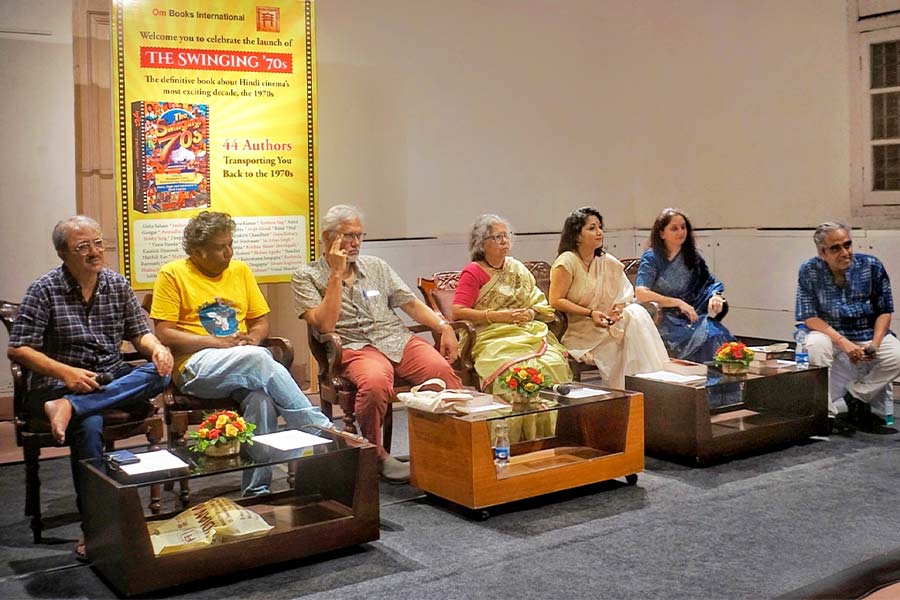
(L-R): Aniruddha Bhattacharjee, Kaushik Bhaumik, Amitava Nag, Ratnottama Sengupta, Maitreyee B Chowdhury, Deepa Buty and Shantanu Ray Chaudhuri
The spectrum of films that spoke of women’s sexuality — whether as objects or as individuals with agency — from Hawas and Ankur to Dastak, was also spoken about by Maitreyee B. Chowdhury, whose essay, Fat Lady: Feminism and Desire in Hindi Cinema of the Seventies was triggered by a Google search on roles played by Tun Tun, another unforgettable character actor of the ’70s. The fact that Jaya Bhaduri and Shabana Azmi, with their conventionally ‘non-heroine’ looks, and Smita Patil, with her fiery, dusky beauty, could co-exist with equal brand and face value as a glamorous figure such as Zeenat Aman was proof of the range of films that were being made and watched and also the variety of sensibilities that were being reflected.
Chetna, which readers will remember for its startlingly provocative poster, was talked of alongside the history behind the poster, which was actually a sarcastic comment on the then Censor Board’s puritanical interpretation of adult scenes and themes. Aniruddha Bhattacharjee spoke of Bobby, whose impact goes beyond a certain generation still referring to polka dots as “Bobby prints” with its championing of inter-faith love stories.
Kaushik Bhaumik, associate professor at Jawaharlal Nehru University, who teaches deep cultural histories of India through Indian cinema, weighed in with how he thought the “Angry Young Man” character of the ’70s and the focus on working class struggles — “sweaty men and women were being shown and were being seen on the big screen” — reflected parallel movements around the world.
The ’70s were the last decade that saw mass viewing of cinema, almost entirely free of class barriers
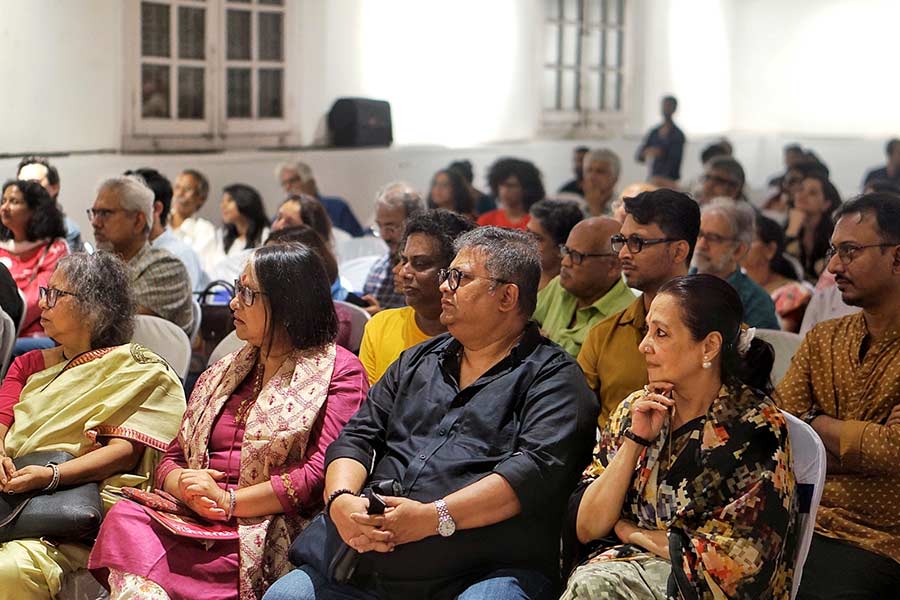
(L-R): Ratnottama Sengupta, Sudeshna Roy, Aniruddha Roy Chowdhury and Moon Moon Sen
It was Ratnatomma Sengupta who spoke of perhaps the most simple and yet profound truth about ’70s films in India. It was the last decade that saw mass viewing of cinema, almost entirely free of class barriers. Yes, there were the chawanni stalls and there were the box seats, but just about everyone in the hall got up and danced with Rajesh Khanna and Mumtaz when Jai Jai Shiv Shankar played in the Elites and Metros of the time.
Most of the points mentioned in the panel discussion merited a book of their own. As some audience members passionately questioned the panellists about specific exclusions, the editors of the book in question were quick to agree: “There is so much we have missed out…” The consensus was that there is at least one more book to look forward to.

Nirupama Kotru delivering the welcome address
As Nirupama Kotru said in her welcome address: “Indian cinema as a whole and Hindi films in particular are an integral aspect of India’s soft power.” Looking back, discovering, rediscovering and, perhaps, introducing younger generations to this glorious decade is something we must all try.
That this book is an admirable attempt at such an endeavour is without doubt. As this reporter walked out of the nostalgia-charged room towards the dark and empty corridors of the Indian Museum, eerie tunes from some Ramsay Brothers film played in her head, triggered not just by the environs but by the promise of another book with the definite inclusion of essays on those purveyors of horror films that proliferated in the ’70s. Aptly so, because as the evening’s discussion made evident, the films of the ’70s are not only of lasting social and political importance, but also deeply personal.


